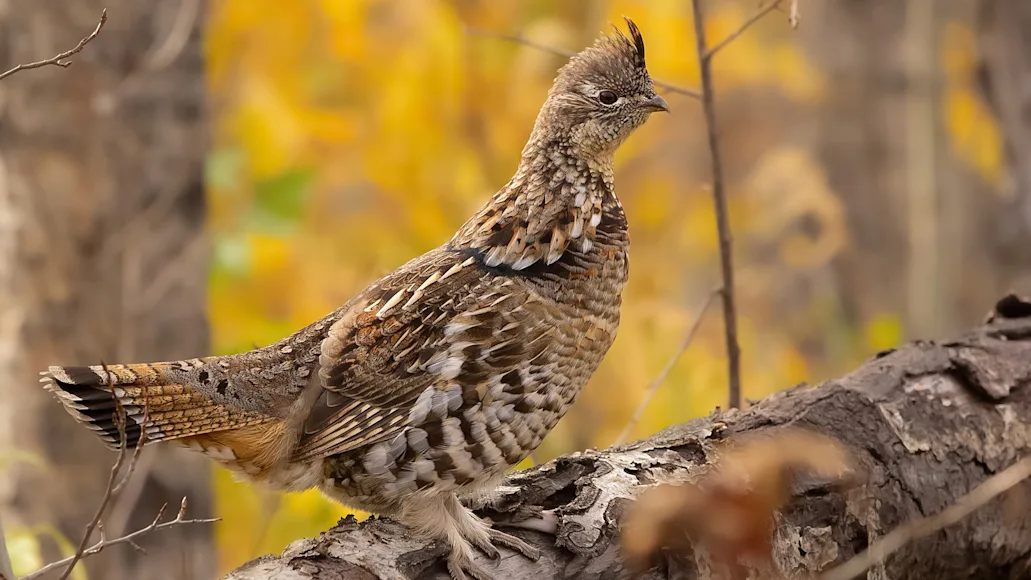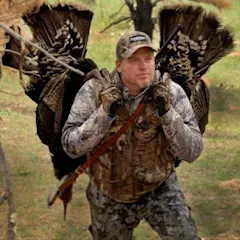Ruffed grouse hunting grew up in 19th century New England, so naturally it can be a bit of a prude. So genteel in certain circles, so neatly wrapped in tradition and style, it must seem to some hunters—especially new ones—the domain of fuddy-duddies and dandies.
Don’t believe it. (I, for one, am too ill-bred and badly dressed to be either.) The truth is, getting into grouse hunting is easy and anything but exclusive. All you really need is a reliable shotgun and a pair of reliable legs. You don’t need tweeds, or an English-made double, or even a bird dog. Just grab your gun and go…and you’ll find the fastest, funnest, most wonderfully frustrating shotgunning in the uplands.
Learn how to subscribe to the new Field & Stream magazine here!
Ruffed Grouse: Table of Contents
How to Find Ruffed Grouse
How to Flush Ruffed Grouse
How to Shoot Ruffed Grouse (and Actually Hit Them)
What to Look for In a Grouse Gun
Best Chokes and Shot Sizes for Grouse
10 Quick Tips for Bagging More Ruffed Grouse
How to Find Ruffed Grouse
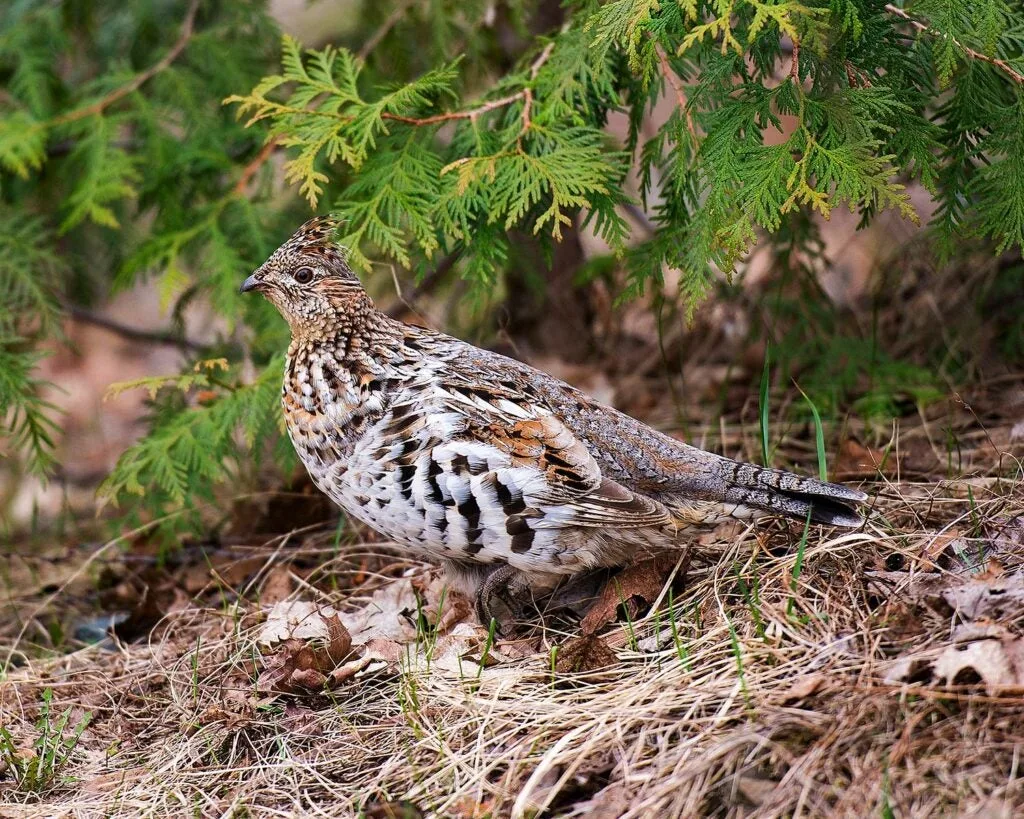
There are grouse hunters who would rather share the same strand of dental floss with you than their best grouse cover. Good habitat is the secret. You just won’t find many birds in marginal habitat. On the other hand, anyone can flush grouse in good habitat. So, it’s a good idea to find some.
Ruffed grouse prefer the early-successional forest cover associated with abandoned farmland, regenerating clear-cuts, burns, strip-mines, and the like. This includes the classic covers that grouse hunters dream of: abandoned apple orchards and old pastures overrun by birch and bramble, shimmering aspen groves and dank alder runs, stone walls and cedar fences. But grouse live here (and in less-idyllic places) for unromantic reasons. In a nutshell, it boils down to food and cover, so here's what to look for.
The Best Ruffed Grouse Foods
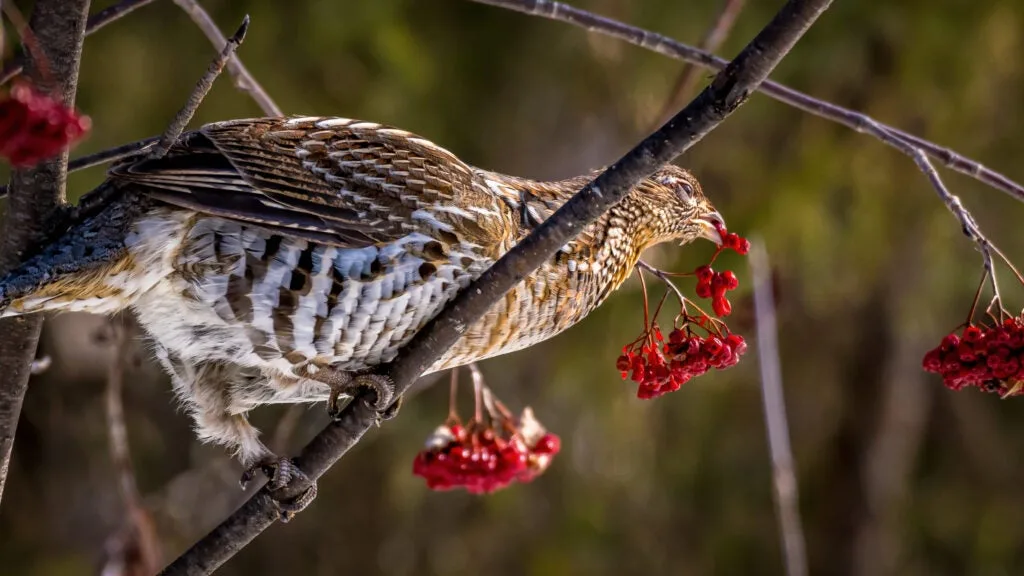
One of the most limiting factors to good grouse habitat is the availability of winter food. Fall is a feast: Apples, clover, wild strawberry, wild grape, cherry, dogwood, thornapple, mountain ash, and greenbrier are just a few favorites—and are all well worth a hunter’s attention. But for most grouse (except in parts of the southeast where they continue to feed on the ground), winter brings a strict diet of buds and catkins. And mostly those of aspens.
It’s no fluke that the range of our most widely distributed tree closely mirrors that of our most widely distributed nonmigratory gamebird. Aspens are grouse magnets, primarily because the buds and catkins of male quaking aspen and bigtooth aspen (also known as popple or poplar) provide the majority of grouse with their single most important winter and early spring food source.
So keep your eye on the aspens: their white trunks gleam in the fall sun, and their yellow leaves shake and shimmer, like so many tiny hands waving you in the right direction. Where aspens are scarce or absent, important winter foods include the buds and catkins of apple, alder, birch, black cottonwood, cherry, ironwood, willow, and cedar.
Prime Ruffed Grouse Cover
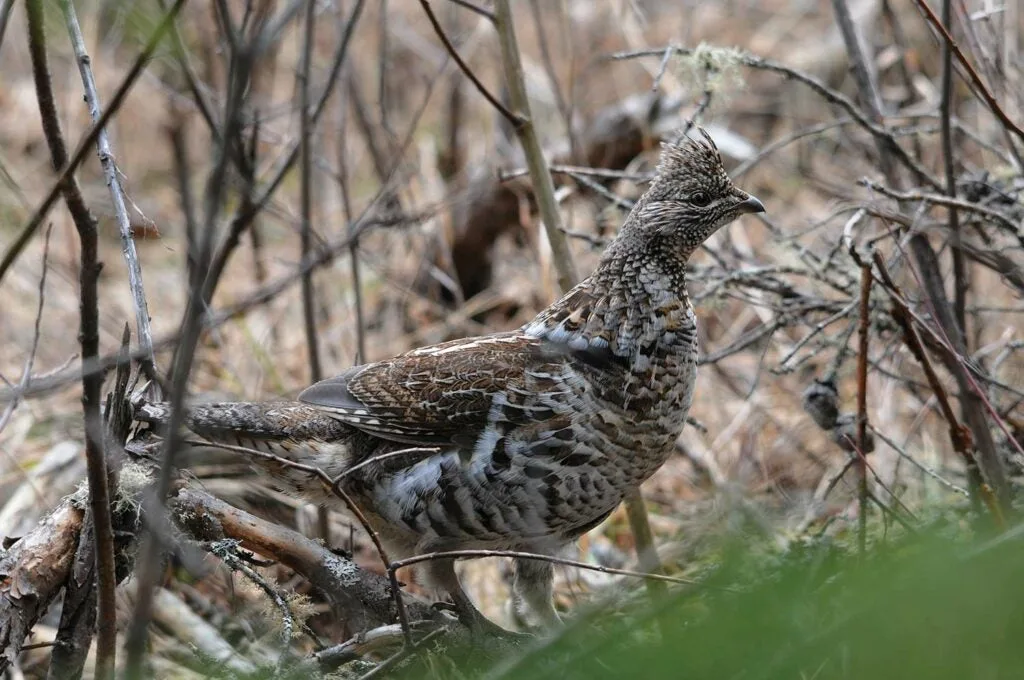
Whether it’s a dense grove of wrist-thick aspens, a thornapple thicket, or a stand of young conifers, grouse need thick stuff to thwart avian predators, their biggest threat. If while hunting a given area you do not at least occasionally think, Why do I torture myself walking through this stuff? there's a good chance you're in the wrong place.
Adult grouse are full-time residents of small home ranges (typically between 10 and 40 acres) that must meet all their needs. Consequently, every good grouse cover, without exception, is a place where different habitat characteristics mingle. In other words, edges.
Look for the obvious edges associated with streams, logging roads, fields, and tree groves of different species and ages. But look also for subtle edges: where a small cluster of pines, even a pair of apple trees, or a single blowdown breaks up the dominant cover. And look especially for multiple edges. Good covers always have a few isolated hotspots, and these are invariably places where several edges meet.
Finally, don't forget that grouse need good roosting cover, particularly in winter. If snow is deep enough, grouse will dive-bomb into a bank, making a small cavern in the snow where they'll roost. Otherwise, they need roosting cover that provides shelter from winter's worst weather, which usually means conifers. It doesn't matter if it's a cedar swamp or hemlock grove or scattered pine or fir trees, where there are conifers nearby or mixed in with young deciduous cover, you'll typically find more grouse.
How to Flush Ruffed Grouse
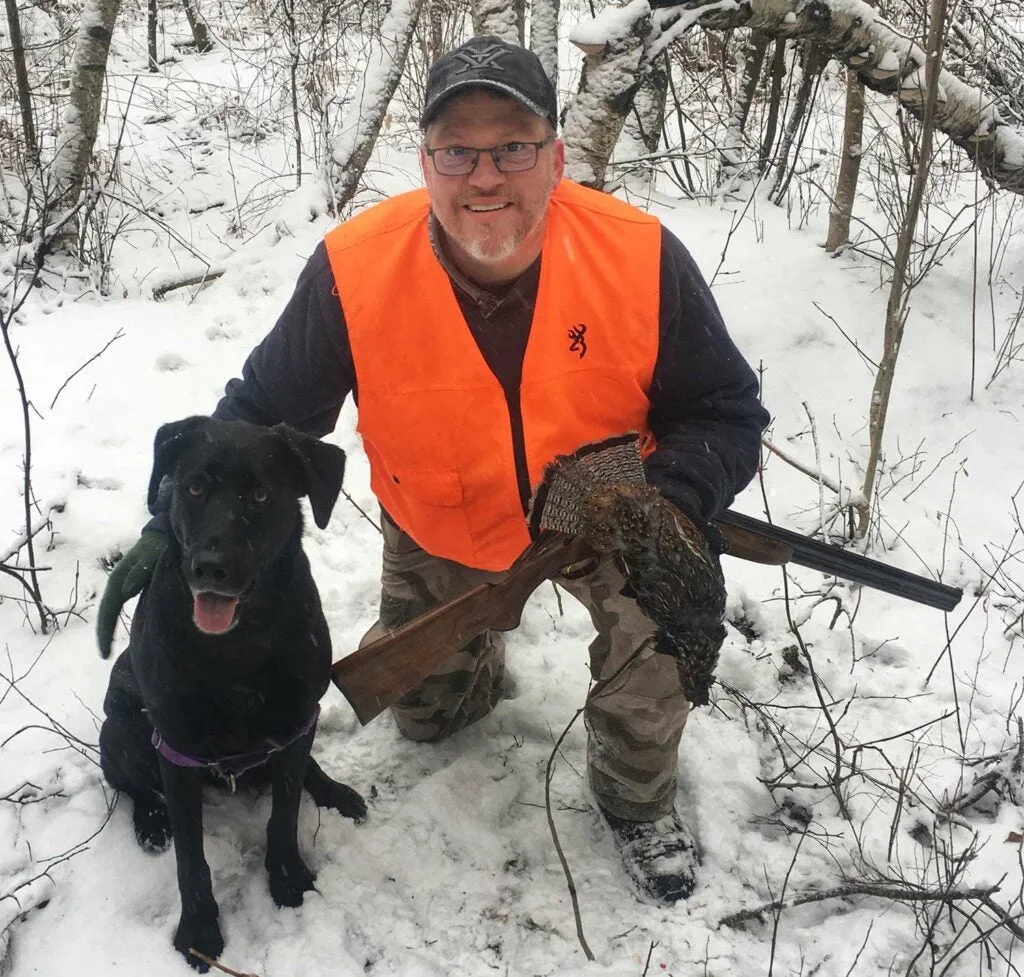
Grouse hunters typically measure their success in numbers of birds flushed (because if they measured it in numbers of birds bagged, they’d take up a different pastime). At its simplest, flushing grouse amounts to a walk in the woods. But done right, to produce the most flushes and the best shooting opportunities, it’s closer to a carefully choreographed dance through the woods. Here are the basic steps, plus a few flourishes.
1. Stop and Go.
A popular theory among grouse hunters holds that if you pause intermittently, hidden birds get nervous and flush. This works. But it works best if you plan your pauses. Move steadily though the cover and try to pause in small openings where you’ll have at least a reasonably clear shot should a bird flush. When you’re approaching an especially birdy spot, don’t pause until you’re within gun range of where you think the birds are holding. Once you get in the midst of a hotspot, pause often and for longer periods.
2. Zig-Zag.
This is another popular tactic that’s only useful when done correctly. There’s no benefit to random zig-zagging. Instead, zig toward the most promising tangle or thicket in front of you, then zag to the next. If your hunting with friends, do your zig-zagging in a tight enough pattern that you don’t interfere with your partners.
3. Think on Your Feet.
While hunting, ask yourself which way flushed grouse are apt to fly. The answer, typically, is toward the bigger, thicker woods, especially softwood stands. Whenever possible, work toward the birds in a way that puts you between them and where they want to go. This does two things: first, it denies the birds clear passage to the best escape cover, often making them hold tighter; second, when a bird does flush, it must fly past you to get to same, giving you a better chance at a shot.
4. Reflush Ruffed Grouse, Sometimes.
Grouse rarely fly more than 100 yards when flushed, so there’s often the opportunity to flush the same bird twice or more. It’s not always worthwhile. Stick to a game plan that’s working. But if your flushes are few and you get a good look at where a bird settles down, go get him.
5. Get a Partner, or Two.
There’s a real charm to still-hunting grouse alone, but you’ll put more birds in front of more guns if you hunt with a friend or two. Work together, making passes through the cover with each member moving in the same general direction on a parallel line. When a bird goes up, yell “Bird” or “Mark” to alert your partners.
Friends are also handy for staging miniature drives. When you come to a small thicket that always seems to hold birds but is too thick for good shooting, call your friend over to post while you plow through it.
6. Get a Dog.
I said you don't need a dog and you don’t. But a truly good grouse dog will help you find, flush, bag, and retrieve more birds. Anything less, however, can be more trouble than it’s worth. English setters are the traditional favorites, with Brittany spaniels, various pointers, and Labs also popular. In any case, don’t get a grouse dog on a whim; look into it carefully, and whatever you do, don’t bring your checkbook on your first trip to see pups.
Related: The 10 Best Grouse Hunting Dogs
How to Shoot Ruffed Grouse (and Actually Hit Them)
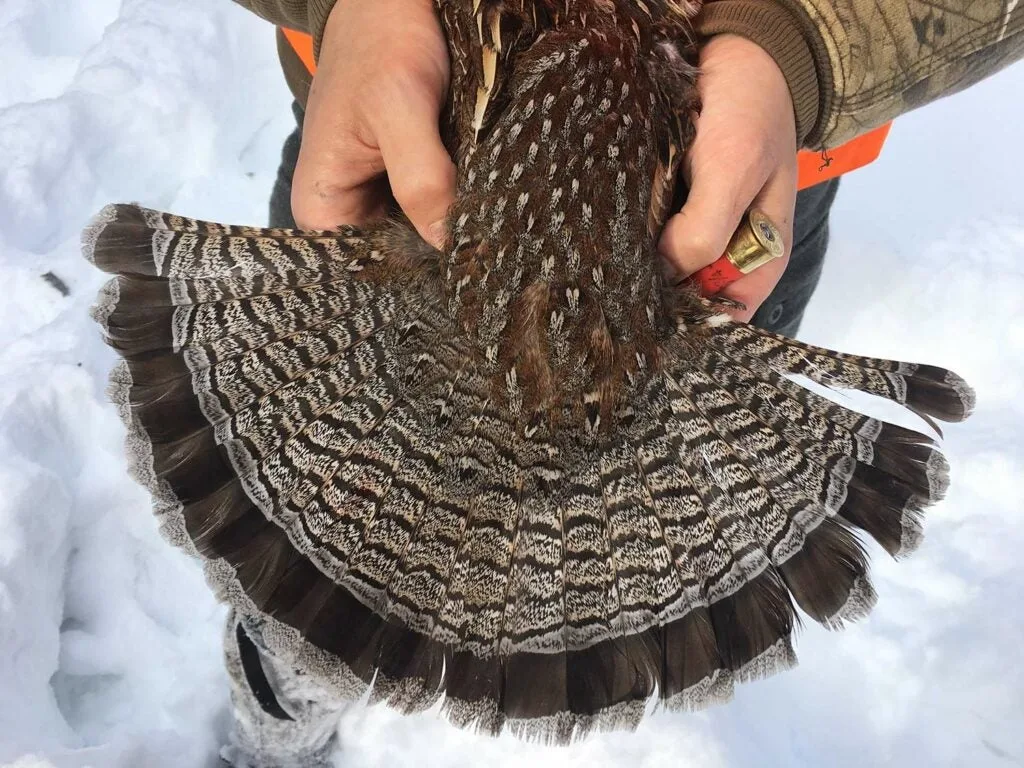
All grouse hunters agree that humility is an important life lesson. Grouse possess a special genius for making grouse hunters feel stupid. And this is both the bane and the beauty of grouse hunting. Missing grouse is a given, but here are some ways to minimize the misses.
Beware the Sucker Shot.
The flush of a grouse is a startling little explosion that can cause you to shoot spastically, as if out of self-protection. When this happens, you’ve been had. The best advice: always expect a flush, always keep your gun at the ready, and when a flush comes, take the little time needed to mount the gun properly and take a directed shot. You haven’t got a prayer otherwise.
People who don’t know what they are talking about sometimes talk loudly about shooting grouse from hip. Baloney. Don’t listen to it. Yes, grouse are fast, but that’s not why people miss them. They miss because of hasty, spastic shooting. A friend of mine who has a terrible time hitting grouse always seems to shoot two or even three times at every bird he sees. Take a lesson from him: If you have time to take two or three bad shots, then you have time to take one good one. Stay calm. Be quick but don’t rush. Take a good a first shot, and then go from there.
Practice.
Get some snap caps and practice at home or practice at the range on clay targets or both. Mount, point, shoot; mount, point, shoot...until you no longer have to think about it, because thinking about it is the next biggest reason people miss. Finally, keep at it. Don’t worry about missing grouse; everybody does it. Just get out there, enjoy the scenery and the season, and sooner or later, you’ll start hitting the damnable, wonderful things.
What to Look for In a Grouse Gun

Above all else, a grouse gun should be lightweight and quick-handling, preferably less than 7 pounds with a barrel-length of 24 to 28 inches. Shorter barrels are ideal for quick pokes at going-away birds in thicker cover, but when you need to swing on late-season birds in more open cover, a longer barrel will help.
A quick second shot is handy, so semi-autos, side-by-sides, and over/unders are popular. Pump guns do the job, too, and a few, like the Ithaca Model 37 and Remington Model 17, are considered classics in the grouse woods. Two-barreled shotguns get extra credit for tradition and aesthetics and because they give the option of carrying two differently choked barrels.
As for gauge, 20 is the frontrunner, but a 12 gauge isn’t overkill, a 16 is sweet, and a 28 makes a dandy little grouse gun. (A 10 gauge is a beast; a .410 is a toy.) For a list of some of the best grouse guns ever made, click here Most important, if the shotgun you have doesn’t exactly fit the description above but shoots bird shot and goes bang, go grouse hunting anyway. And consider saving your money for something better suited.
Related: The 10 Best Grouse Guns Ever Made
Best Chokes and Shot Sizes for Grouse
These are subjects of considerable and often pointless debate. We’ll make it simple. The best all-around choke for a grouse gun is Improved Cylinder (IC). If your gun has two barrels, IC for the first shot and Modified for the second. Some hunters, particularly those who shoot 12-gauge guns, prefer Skeet, Skeet/IC, or even an open bore. Anything tighter than Modified doesn’t really belong in the grouse woods (but still beats not hunting).
The best shot size for grouse is a toss-up between 7-1/2s and 8s. If you use 8s, conventional wisdom says you should switch to 7-1/2s during the late season when bare trees make longer shots more feasible. If you hunt with a double, you can put the larger shot in the second barrel only.
10 Quick Tips for Hunting Ruffed Grouse
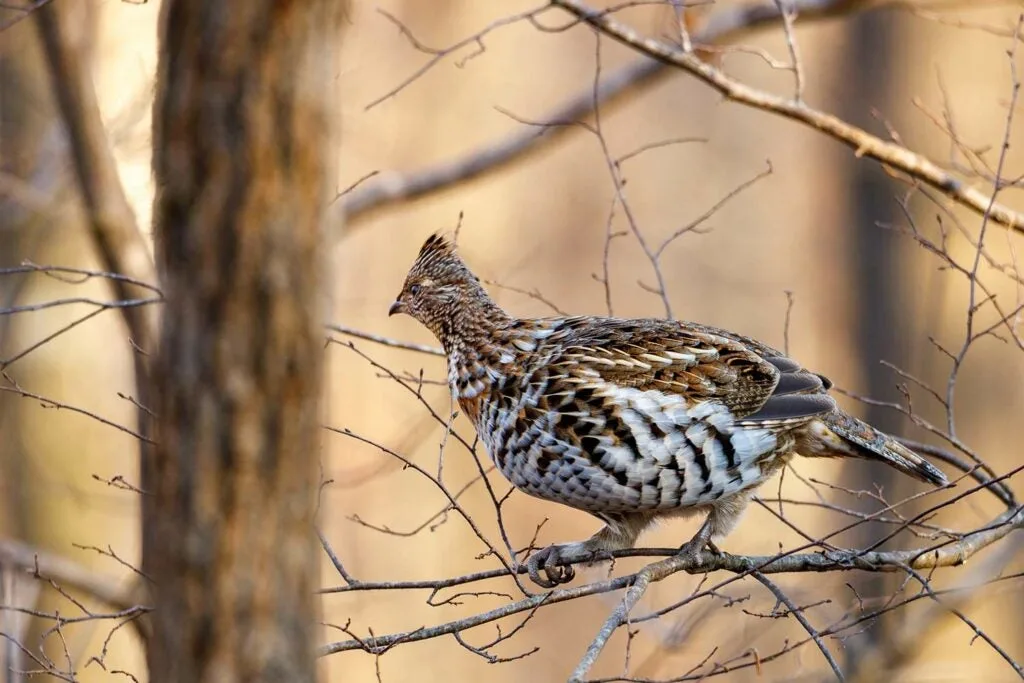
During a cold winter wind, look for grouse in protected valleys and on the lee side of slopes.
At midday, grouse often roost in softwoods adjacent to or mixed among good deciduous cover. They’ll flush from the trees, so keep your gun pointed upward.
Brushy hedgerows and fingers that cut into fields (especially cornfields) are often passed up as cottontail cover, but they’ll hold grouse on bright mornings and afternoons.
When the weather turns nasty, look for grouse in thick, protective (often coniferous) cover.
It’s a big advantage to have a grouse gun you can carry comfortably in one hand and at the ready (held at the pistol grip with the butt resting on your hip). This leaves the other hand free to clear brush as needed.
Concentrate on obvious feeding areas in the mornings and late afternoons, when grouse typically feed.
Early-season flushes don’t necessarily indicate good cover, because young, often misguided, grouse disperse in early fall and are frequently found in marginal habitat. Keep closer tabs on late-season flushes.
You can find new grouse haunts just by keeping your ears open. Whenever you’re in the woods and especially in spring, listen for drumming grouse.
The best time to ask permission to hunt grouse on private land is after deer season. During deer season, you can sometimes persuade landowners by explaining that you’re looking for a safe place to hunt away from the deer hunting crowd.
A simple phone call to your regional DNR office can lead to good, even overlooked, public grouse cover. And a visit to a local logging company can put you on good private land.
Cleaning and Cooking Ruffed Grouse
Ruffed grouse make first-rate table fare. I know a lot of hunters who rave about wild turkey as the best game meat, but (as much as I like wild turkey) I’d rather have grouse. The white breast meat of a ruffed grouse is fine and delicate with a mild but distinctive flavor. Cook it right, and it’ll be moist too. But first you have to get at it. Cleaning a grouse couldn’t be easier, and there are two common ways to go about it.
The 2-Second Method

If you want to quickly clean your grouse in the field and keep on hunting, here’s a trick: Lay the bird on the ground breast-up. Step on the bird’s wings, with your feet as close to the its body as possible. Then grab the legs and slowly, gradually pull. Do it right and everything but the breast and wings will pull free, and you’ll be standing on a perfectly cleaned grouse breast with wings attached. Put that in a plastic bag in your game pouch, and then remove the wings later.
The 2-Minute Method
This method is also very easy, but it’s something you’re more likely to do with whole birds after you get home from the hunt. (If it is warm out, you might want to quickly field dress the birds before stuffing them in your game pouch by cutting a slit from the bottom of the breast to the anus and pulling out the innards with two fingers. If it’s cool or cold out, this usually isn’t necessary; just clean them when you get home as follows.)

All you have to do is lay the bird down breast-up, peel the skin completely away from the breast, then remove the breast meat by slicing down the middle of the breast bone and removing the cutlet from each side. Run your knife along the breast bone as you go, being careful to get all the meat.
As for cooking, grilling, pan-frying, and deep frying are all great methods. Basically, you can treat a grouse breast just as you would a chicken breast but with one big caveat: Don’t cook it as long. Grouse meat can get dry if you overcook it; if you don’t, it’ll be some of the best game meat you’ll ever eat.

